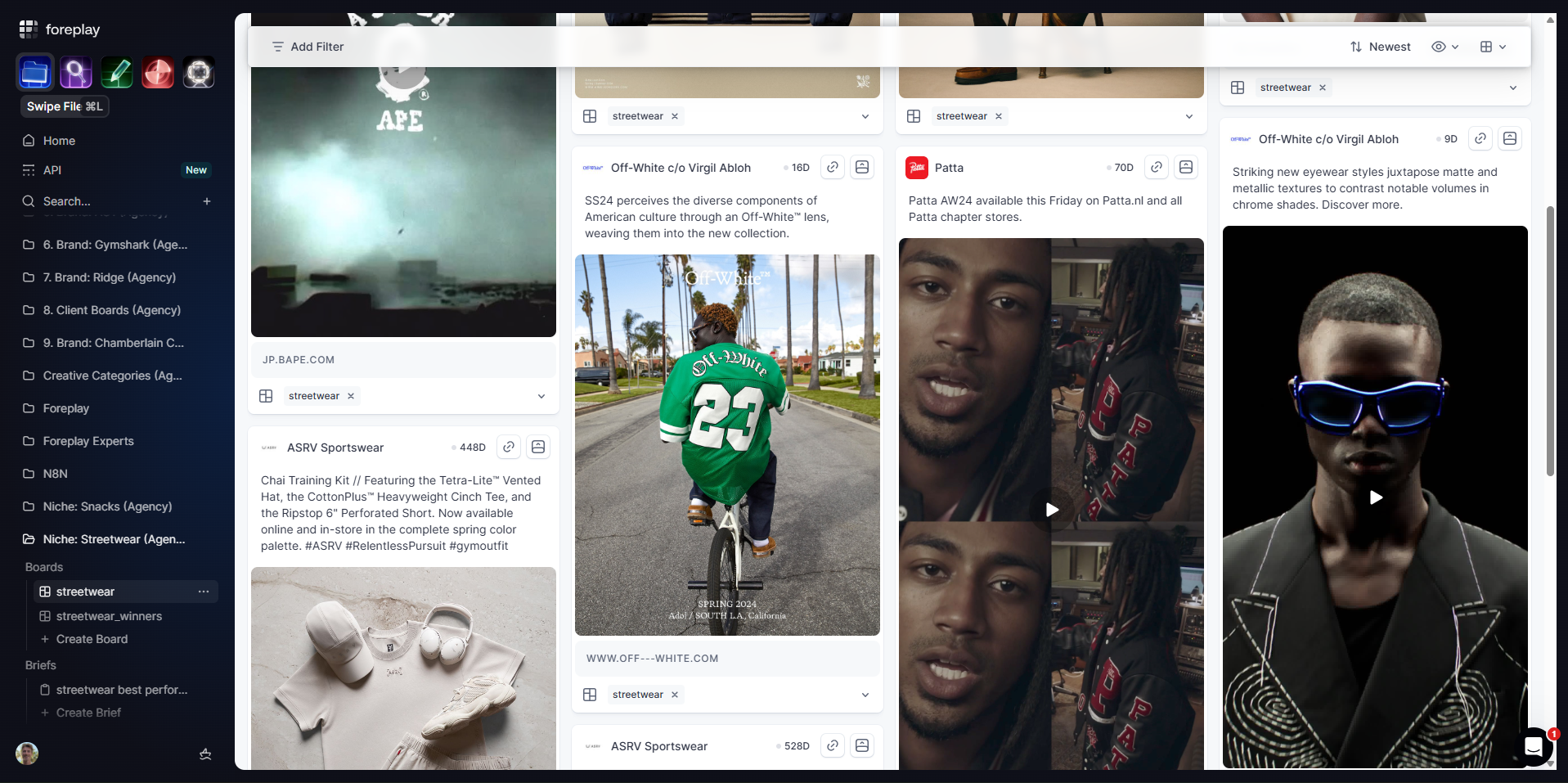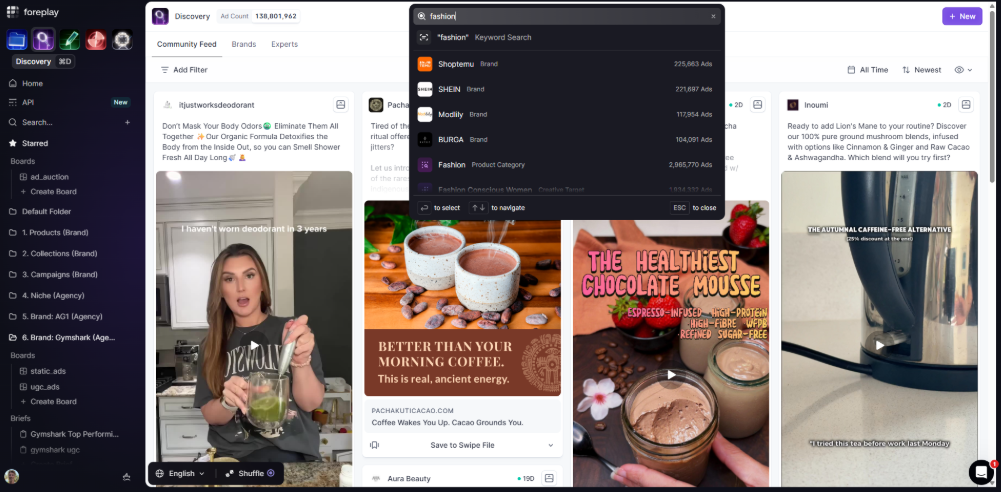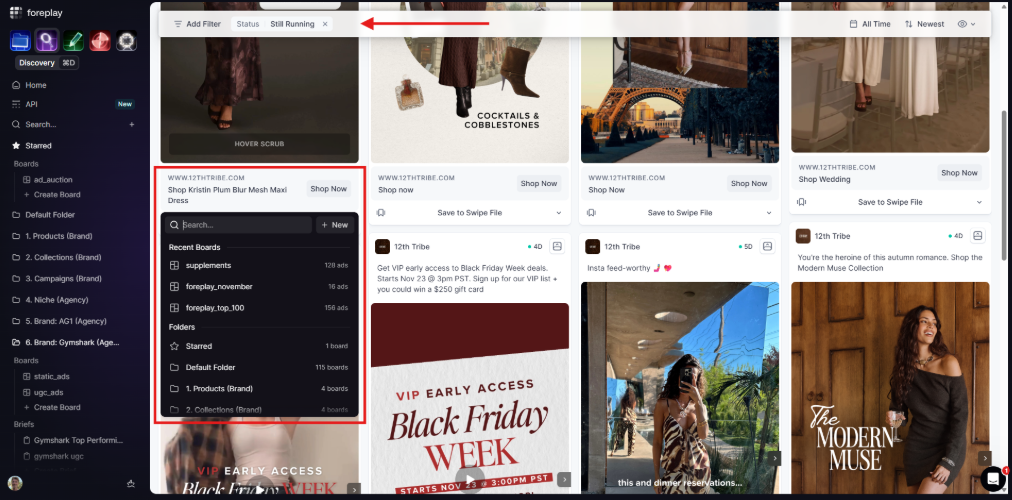How Creative Strategists At Agencies Deliver Ad Creative Inspiration
In this blog and accompanying video, Jack Kavanagh shows how Foreplay helps creative strategists work faster, stay organized, and share inspiration in a format that teams can act on instantly.

If you work as a creative strategist in house, at a brand, or inside an agency, you know the job is simple to describe and hard to do. You are drawing the map. You are creating the plan for every piece of creative a brand brings to market. Images, video, audio, social, ads, email, website. It all rolls up into one thing. Creative that actually drives business outcomes.
That sounds great until you have to deliver it every single week.
One of the most important deliverables in this role is inspiration. Real examples. Real ads. Real creative that shows the team what good looks like. You are basically feeding a constant stream of direction to photographers, editors, UGC creators, designers, and founders so they can turn strategy into execution.
The problem is the delivery. Google Docs, random links, endless screenshots, dead URLs, Slack threads, DM conversations that start as work and drift into chaos. Stuff gets lost. You lose the thread. No one knows where anything is.
That is where Foreplay fixes the problem.

I open my discovery library and instantly have access to over 80 million ads. If I am working with a fashion brand, I type fashion. I get brands, categories, creative targets, and everything relevant to the niche. I can start with a target audience or go straight to brands I want to study. I can filter, drill down, and see what is actually working in the market right now.

And this is where things get useful. Instead of grabbing whatever is newest, I check what has been running the longest. Longevity is the real signal. If a brand has kept a specific ad on for 430 days, that tells me more than any shiny new test. So I save it to my swipe file and drop it into the board for this fashion project.
You can name boards after brands, niches, or sprints. If you work with multiple brands, splitting by niche is usually cleaner so you do not mix something that works for women's fashion with something that is obviously meant for men. The tighter the board, the more actionable it becomes.

Once the board is ready, you share it. One link. One place. No clutter. No dead screenshots. No scattered messages. Your team or your client can open it without an account and instantly see the inspiration you curated. And you can whitelist the board so it is branded as your deliverable, not just a random link.
To show you how useful this is, here is a quick story. I used to work with a brand called Goldhinge. I found a set of ads from Sporting Rich that had a paparazzi style look. Models walking down the street, shots that looked like they were snapped on the fly. I knew it was perfect for them, but sending it through Instagram DMs felt insane. It felt unprofessional and it usually led nowhere.
If I had Foreplay back then, I would have dropped those ads into a board and sent one clean link. Instead, I hacked it together in DMs and somehow it still worked. They loved it so much they built an entire photoshoot around that style.
That is what a proper inspiration workflow does. It turns scattered ideas into real creative output.
So if you want your creative strategy to actually land, start collecting the right ads, organize them into boards, and share them in a way that feels official. It makes your life easier and your work better.
